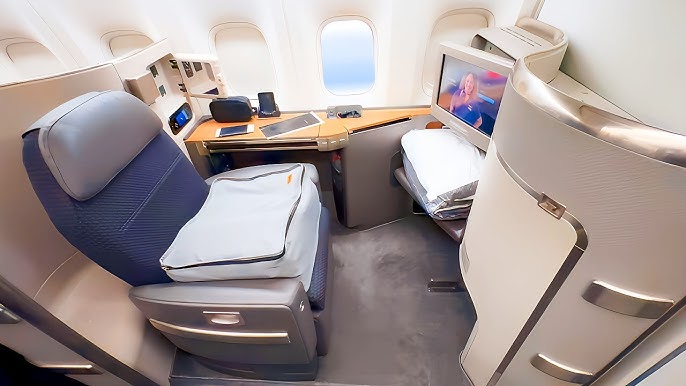American Airlines (NASDAQ: AAL) is making a bold shift in its approach to premium travel, phasing out long-haul first class in favor of an expanded and upgraded business class suite experience. The move, which will see the airline’s new “Flagship Suite” business class debut next month, reflects changing traveler preferences and intensifies competition among the major U.S. carriers for high-paying customers.
The transformation will be most visible on American’s Boeing 777-300ER and Airbus A321T aircraft, both of which have historically featured dedicated first class cabins. These aircraft will be retrofitted to remove first class entirely, making room for a larger business class section equipped with state-of-the-art suites. Each suite features sliding privacy doors, a design element that has become increasingly popular among airlines seeking to offer a more exclusive and comfortable in-flight experience.
According to American Airlines executives, the decision is driven by both customer demand and financial logic. “The quality of the business class seat has improved so much, and frankly by removing first class we can go provide more business class seats, which is what our customers most want,” said Vasu Raja, the airline’s Chief Commercial Officer5. The revamped 777-300ERs, for example, will now offer 70 Flagship Suite business class seats and 44 premium economy seats, compared to the current total of 60 premium seats split between first and business class.
American Airlines’ move comes as the U.S. airline industry undergoes a broader shift in premium offerings. Delta Air Lines and United Airlines, American’s chief rivals, have already eliminated international first class, instead investing heavily in business class cabins that target affluent travelers seeking comfort, privacy, and personalized service. Delta, for instance, has successfully positioned itself as a leader in premium travel, with its Delta One suites and a focus on customer experience that has translated into strong financial performance.
United, meanwhile, continues to invest in its Polaris business class and premium lounges, aiming to capture more high-yield travelers. Both competitors have made clear that the future of premium air travel lies in business class, not traditional first class, a trend now fully embraced by American.
While American Airlines has sometimes lagged behind Delta and United in brand perception and consistency, its business class product is now regarded as highly competitive, especially on long-haul and premium domestic routes. The airline has also strengthened its loyalty program, AAdvantage, which is considered one of the most valuable among major U.S. carriers.
By reallocating space from first class to business class, American aims to increase revenue per seat and better align its product with what premium travelers actually want: privacy, comfort, and modern amenities. The introduction of privacy doors and suite-style seating is a direct response to evolving customer expectations and the competitive landscape.
The full transformation of American’s long-haul fleet is expected to be complete by the end of 2025, with the first new suites entering service next month. As the airline industry continues to recover and evolve post-pandemic, American Airlines’ strategic focus on business class underscores the growing importance of premium travel in driving profitability and brand loyalty.

